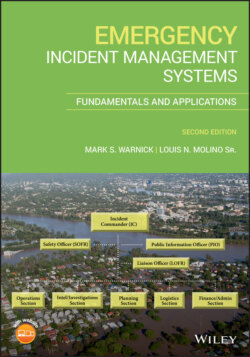Читать книгу Emergency Incident Management Systems - Mark Warnick S., Louis N. Molino Sr - Страница 22
1.4.3 Conflicts and Egos
ОглавлениеConflicts and egos have been a problem since the first governmental entity had to work with the second governmental agency, and probably even before that time. Let us face it, most people who work in public safety are Type A personalities. Type A personalities (in theory) are those with personalities that can be more competitive and more ambitious. Type A personality individuals can easily become impatient, and they are usually extremely aware of their time management. They usually have a schedule or task they want to achieve in a set amount of time, and they do their best to meet that schedule. They also tend to be more aggressive than the other types of personalities.
When we look at Type A personality in a public safety context, it is important to remember that this type of personality is usually needed to outthink the criminals, to overcome a disaster, or to be able to put the fire out while keeping everyone safe. While a Type A personality is important to ensure that public safety personnel are the victor, that personality can also cause conflict, and feed into an ego.
In the past, and even still today, clashes occurred between fire chiefs, police chiefs, and others who assumed command. Sometimes these clashes occurred because someone felt like they should be in charge (usually at the local government level). While rare, there would occasionally be verbal arguments, the occasional fist fight, and in a few incidents, arrests were made because an agency did not want to give up what control they had or assumed they had. These conflicts and egos would lead to animosity. This would often build and eventually create a hostile environment between the agencies. Sometimes, this animosity would manifest after the event or incident was over, creating even more tension among local agencies. This too led to problems when managing an incident.
Keeping egos in check was perhaps one of the more difficult problems that needed to be overcome. Much like a horse‐drawn wagon, nobody got anything done without everyone pulling the same direction. Unfortunately, prior to an IMS method, this was a common problem that was seen, and sometimes still is seen in public safety today.
